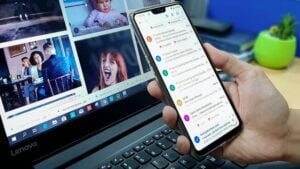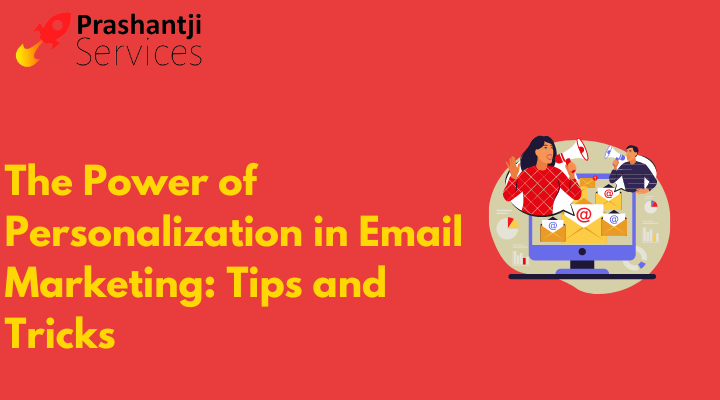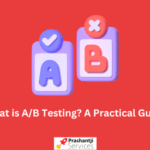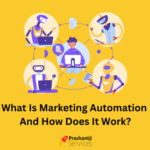Welcome to the world of email marketing, where personalized communication is king! In today’s digital age, consumers are bombarded with countless emails every day. So how do you make sure your message stands out from the rest? The answer lies in personalization. By tailoring your emails to each recipient’s individual interests and needs, you can create a powerful connection that drives engagement and conversion rates through the roof. But just how do you go about achieving this level of personalization? Fear not – in this blog post, we’ll share some top tips and tricks for harnessing the power of personalization in your email marketing campaigns. Let’s get started!
Introduction to Personalized Email Marketing
Email marketing is one of the most effective ways to reach your customers and promote your business. However, with so many businesses competing for attention in the inbox, it’s more important than ever to stand out from the crowd. That’s where personalized email marketing comes in.
Personalized email marketing is all about sending emails that are tailored to the specific needs and interests of your recipients. By taking the time to segment your list and create targeted content, you can ensure that your emails are always relevant and engaging.
There are a few key things to keep in mind when personalizing your emails:
1. Make sure you have permission to send personalized emails. This means having an up-to-date list of subscribers who have opted in to receive communications from you.
2. segment your list into smaller groups so you can tailor your content more effectively. This could be based on factors like age, location, or past purchase history.
3. Take advantage of data you already have on your customers to create dynamic content that changes based on their preferences and interactions with your brand.
4. Always test different versions of your emails before sending them out to ensure they’re as effective as possible. Try A/B testing different subject lines, calls to action, or images to see what works best for your audience.
following these simple tips, you can start making the most of personalized email marketing for your business today!
Benefits of Personalization in Email Marketing
Personalization in email marketing can have a number of benefits for both the sender and the recipient. For the sender, personalization can help to improve open rates and click-through rates, as well as provide a more tailored and relevant message for the recipient. For the recipient, personalization can provide a more personalized and engaging experience, which can lead to improved customer loyalty and satisfaction.
1. Improved Open Rates and Click-Through Rates: Personalized emails are more likely to be opened and acted upon than generic emails, as they are more relevant and tailored to the individual. This can lead to improved open rates and click-through rates, which means that more people are engaging with your email campaigns.
2. Increased Customer Loyalty: Personalizing emails makes customers feel valued and appreciated, which can increase their loyalty to your brand.
3. Improved Targeting: Personalization allows you to tailor messages for different segments of your customer base, which can allow you to target specific groups with more relevant messaging.
4. Cost Savings: It is often cheaper and easier to personalize emails than it is to create multiple versions of a generic email for different segments of your audience.
5. Increased Engagement: Personalization can help to create a more engaging experience for the recipient, leading to improved customer satisfaction and engagement with your brand.
6. Improved Relevance: Personalizing emails allows you to send more relevant messages to customers, which can lead to increased sales and conversions.
7. Enhanced Brand Image: Personalizing emails can help to create a more positive brand image and reputation, as customers will perceive your company as being more attentive and caring.

Best Practices for Personalizing Emails
Personalization is one of the most powerful tools in email marketing. It allows you to create messages that are relevant and engaging to your subscribers.
Here are some best practices for personalizing your emails:
1. Use subscriber data to personalize your emails
- The more data you have about your subscribers, the more personalized your emails can be. Collect data such as name, location, gender, age, and interests. This information will help you segment your list and send more targeted emails.
2. Use dynamic content to insert personalized elements into your emails
- Dynamic content is a great way to add personalization without having to manually edit each email. You can use dynamic content to insert the subscriber’s name or other information into the email body or subject line.
3. Send triggered emails based on subscriber behavior
- Triggered emails are a highly effective form of personalization. These are emails that are sent automatically based on certain actions that the subscriber takes, such as opening an email, clicking a link, or making a purchase.
4. Make sure your email design is responsive
- With more people reading emails on mobile devices, it’s important to make sure your email design is responsive. This means that it will adjust to fit any screen size. A responsive design will make sure your email looks great no matter where it’s being viewed.
5. Test different types of personalization to see what works best
- Personalization is an ongoing process, so don’t be afraid to test different types of personalization to see what works best for your subscribers. Try inserting the subscriber’s name into the subject line or body of the email, using dynamic content to display personalized images, or sending triggered emails based on subscriber behavior.
6. Monitor your results and optimize accordingly
- The only way to determine if your personalization efforts are working is by testing and monitoring your results. Keep track of key metrics such as open rate, click-through rate, and conversion rate so you can optimize your emails for better performance.
Tools and Strategies for Optimizing Your Email Content
When it comes to your email marketing content, personalization can make all the difference. By tailoring your content to the specific needs and interests of your target audience, you can create more engaging and effective communications that will lead to better results.
Here are some tips and tricks for optimizing your email content for personalization:
1. Start with a strong subject line: Your subject line is the first thing recipients will see when they receive your email, so make sure it’s attention-grabbing and relevant to the rest of your content.
2. Use dynamic content blocks: Dynamic content blocks allow you to customize your email content for each individual recipient. By including information like the recipient’s name or location, you can make your emails more personal and relevant.
3. Take advantage of segmentation: Segmenting your audience allows you to send more targeted and relevant emails. By dividing your list into smaller groups based on factors like age, gender, or interests, you can ensure that each group receives communications that are most relevant to them.
4. Timing is everything: Make sure you’re sending your emails at a time when they’re most likely to be opened and read. Testing different send times can help you find the best time to reach your audience.
5. Keep it short and sweet: With email inboxes becoming more crowded than ever, it’s important to keep your messages concise and to the point. Long emails are less likely to be read, so make sure you get your point across quickly and clearly.
6. Use visuals: Visuals are a great way to break up text-heavy emails and draw the reader’s attention to important sections of your message. Try adding images or videos to make your emails more engaging.
7. Use A/B testing: A/B testing allows you to send two different versions of an email to two different groups and then measure which version performed better in terms of open rate, click-through rate, or other metrics that matter to your business. This is a great way to optimize the performance of your email campaigns over time.

Tips for Leveraging Automation to Create More Targeted Messages
1. Start by segmenting your list into different groups based on factors like age, location, gender, interests, etc. This will allow you to send more targeted messages to each group.
2. Use automation to send triggered messages based on certain actions your subscribers take. For example, you could send a welcome email to new subscribers or a coupon code to those who abandon their shopping carts.
3. Take advantage of personalization features like merge tags and dynamic content to further customize your messages. Merge tags allow you to insert subscriber-specific information (like their first name) into your emails, while dynamic content lets you change parts of your email based on what you know about the recipient.
4. Use A/B testing to fine-tune your subject lines, call-to-actions, and other elements of your email marketing campaigns. This will help you ensure that your messages are as effective as possible.
5. Keep an eye on your open and click-through rates so you can gauge the success of your personalization efforts. Make sure to continue testing and tweaking your strategy over time so you can keep improving those numbers!
Examples of Successful Personalization Campaigns
1. Nike: With millions of customers and a plethora of data, Nike was able to create highly personalized email content and product recommendations that led to 30% higher order values.
2. Starbucks: Starbucks used customer location data to send weather-appropriate messages and drink recommendations. This led to a 2x lift in clickthrough rates.
3. Amazon: Amazon has long been a master of personalization, using past purchase data and browsing behavior to make product recommendations that are highly relevant to each individual customer. This has helped them drive significant increases in sales and customer loyalty.
4. eBay: eBay took a different approach to personalization, using it to improve the buyer experience by customizing the search results page based on each user’s individual preferences. This resulted in a 5% increase in conversion rates.
5. Best Buy: Best Buy used personalization to create targeted email campaigns that resulted in 10x higher clickthrough rates and 6x higher conversion rates compared to their generic emails.
Conclusion
As we head into 2020, it’s more important than ever to focus on personalization in email marketing. Personalized emails have been shown to produce 6x higher transaction rates, and they are also great for building customer loyalty.
There are a few key things to keep in mind when personalizing your emails:
1. Use the customer’s name in the subject line and throughout the email. This will help create a connection with the reader.
2. Segment your list so you can send targeted messages to different groups of people. This way, you can make sure each email is relevant to the recipient.
3. Use dynamic content to insert different information based on who is reading the email. For example, you could insert a product recommendation that is tailored to the reader’s interests.
4. Always test different versions of your emails to see what works best for your audience. Personalization is a great way to improve your results, but it’s important to experiment to find what works best for your business.
By following these tips, you can ensure that your emails are personalized and engaging. Personalized emails can help you build relationships with customers and boost sales. Personalization in email marketing can be a powerful tool to help you connect with your customers and build relationships. By using the tips and tricks in this article, you can create more personalized and effective email campaigns that will engage your customers and help you achieve your business goals.









